#「Sleepless Night of The Eastern Country (Queue)」
Explore tagged Tumblr posts
Text
@heartmannsr0se || From here!
“There’s...two of me? Well, that’s one way to put it.”
Thankfully she was well versed with the mutlidimension hijinks to piece the rest together. Of course that didn’t mean she was going to be all friendly straight away, after all, this lady was still a stranger to her so it’s not like she’s going to relax yet.

“Uh-huh, how did you know there’s two of me already? I mean, you said you ‘forgot’ so I assume you already knew about that before no?”
#heartmannsr0se#「Red Oni(IC)」#don't you just hate when your old age makes you forget about the multiverse so you confused this cat for another?#sure is rough buddy#「Sleepless Night of The Eastern Country (Queue)」
1 note
·
View note
Text
We Two Dervishes: Istanbul Diaries
If you do not wish to read the whole article but are interested in a typical itinerary and tips, skip to the last section. Important tips are highlighted in Bold also.
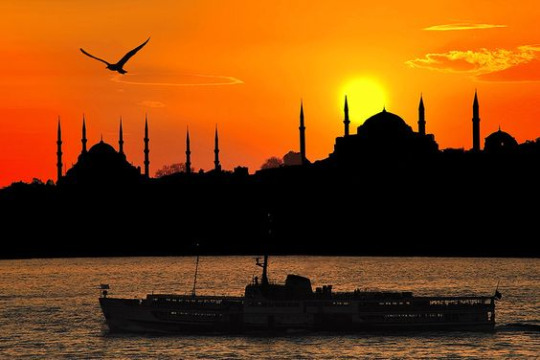
Courtesy: Mehmet Gören (Pintrest)
Pins and Needles
To think that this trip almost never happened.
ProTip: Take the visa rules very seriously. The spirit doesn’t matter, the letter absolutely does. Also, never overestimate Consulates and Visa centres, if they say it will take 10 days, take it to mean that it will take 11 days at least and prepare accordingly.
4 days until the trip, no visa in hand, sleepless nights, continuously refreshing the VFS website for any change in the status of arrival of Visa from Mumbai to Ahmedabad, estimating time it takes for courier services to deliver a package from Mumbai to Ahmedabad and constantly flitting between self reassurance and sick-in-the-stomach worry that visa won’t arrive on time. If only we had been a day early, the situation where a small delay could fully derail the trip I have wanted to take for a long time would not have precipitated, and all the preparation, from ordering The Museum of Innocence, to vividly imagining/dreaming of being there would sink in front of our eyes. To say nothing of the monetary loss, because we had booked non-refundable flights.
The visa arrived two and a half hours before our departure to Mumbai. The VFS staff weren’t sure when the damn thing would come, so we just decided to camp out in front of the visa centre and wait for the Blue Dart mini-truck. Fortunately they were expecting a delivery in the evening, and they were kind enough to give our visas to us after their working hours (Visa Centres and Consulates are strict about their working hours. Fervently so). I am not sure when the last time I had a tsunami of relief wash over was. The package soon arrived and we heard the guard talking amongst themselves about arrival of Japanese, American, and to our good fortune, Turkish. We ran to Forex centre close by, requesting them on phone to stay open for a little while (thankfully, they wanted our business) and managed to buy a modest sum of 230 Euros, because that’s all the Euros they had.
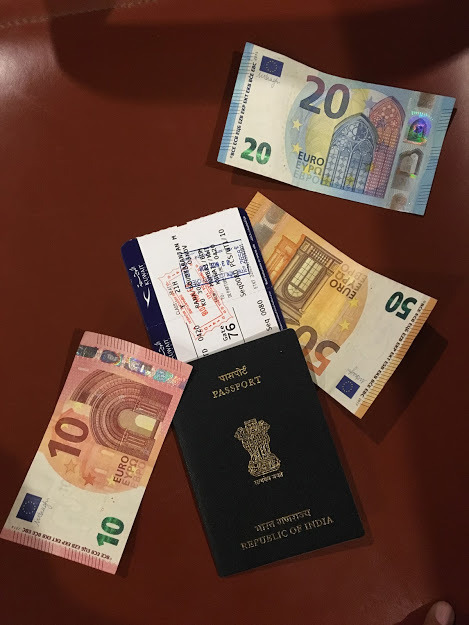
Sigh of Relief
Battlefield
I would like to argue that the first country out of my own that I have stepped on is Turkey and that layovers don’t count, because boy Kuwait City was disappointing. The only fascinating thing that one can see in the darkness before dawn break are the fires in the oil fields. Kuwait City, especially the area around the airport looks like an empty abandoned desert, and it should because it is far from the actual Kuwait City. If you look at the map of Kuwait, you will be struck by the featurelessness of the country, apart from the dense network of roads around a small tip that is Kuwait City. The airliner from Mumbai had nice food (as airplane foods go), and a courteous and diverse staff: You had an Indian, an Arabian, a Caucasian, an African, and an Asian. The Cinema and TV selection were average, but the movies were heavily censored. Even words like ‘Hell’ were muted, and absolutely no scenes of intimacy, even those that would be demure by Bollywood standards!
The airport has 2 terminals. The old one receives flights from Mumbai, and the new modern terminal services to Istanbul. The ground staff, or the lack of them is particularly pain in the ass. It was 6a.m and passengers were to be transferred to new terminal, and the staff was scrambling to get the security officer and the bus driver to service the passengers, causing delays. This worried me a bit during the onward flight, because the return flight, we had a layover of meagre 1 hour 25 min. (And my fears came true. The return flight departed half an hour late from Istanbul, because of a fuel leakage which stalled our take-off and put us right at the end of the queue. We had to scramble to get to put flight to Mumbai, because guess what, it rained that day. In a desert.) The Security check was especially very adamant on checking each and every item in the baggage. In fact, they didn’t even allow us the toothpaste, so we had to go foul mouthed all the way till our hotel at Istanbul!
The ground staff of the airport comprised mostly of, you guessed it, immigrants. And of those, most of them are South Asians. And of those, most of them appeared Malayalis, fulfilling the Gulf dream as their counterparts elsewhere. You can easily get by with Hindi around the airport at least. And the toilets do not have urinals! This complies with the personal law prescribed in Islam. The washrooms at Istanbul do have the urinals though.
KWI of course was a battlefield in the Battle of Kuwait International Airport, a significant battle of the Gulf War between US and allies and occupying Iraq led by Saddam Hussein.
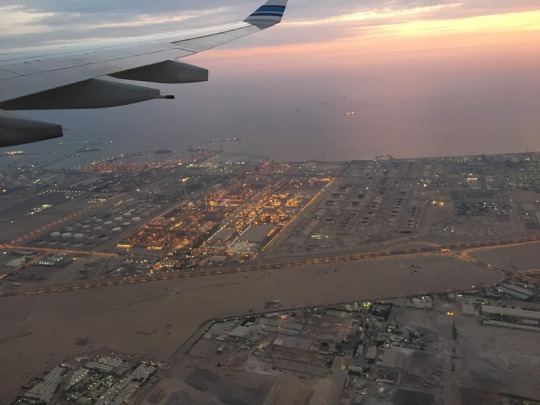
Where Airlift was Set
Why Istanbul?
Because Istanbul is magical. A place where the streets whisper to you the tales the glory and doom, rise and fall; ascension and declination of emperors, sultans and revolutionaries; not unlike the undulating terrain it occupies. The place where the East meets West, the great continents and civilisations of Asia and Europe face off across a narrow waterbody that also connects North with the South. To see Istanbul, to understand Istanbul is to understand the history of the culture and civilisation of a major part of the world, in fact the world itself. Devout muslims, avid history buffs, Europhiles, party creatures- they will all find in the ruins and the glory of the city what they are looking for.
Istanbul is a time capsule, a place where time is laid out in space like a spread out deck of cards.
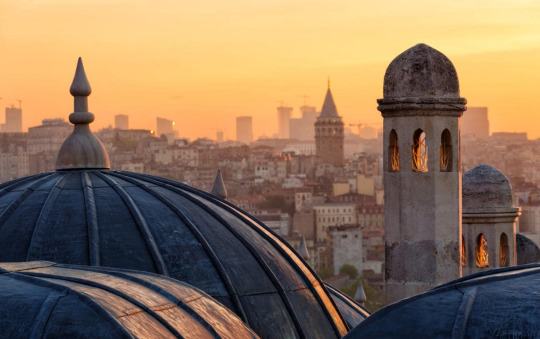
A stock photo
It’s a Church! It’s a Mosque! It’s Museum!
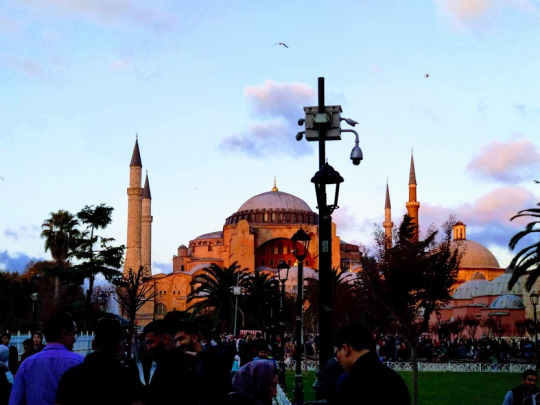
My fascination with Ayasofya or Hagia Sophia, or the magnitude of it, is somewhat a puzzle to me. I do not know why I have been entranced by this beautiful, beautiful Eastern Roman/Ottoman marvel. I know for certain it began when I first read about it in Netfundu magazine in my school days. Netfundu was a kiddie magazine complimentary during the heydays of Indian Airlines, the domestic govt. operated carrier before it was disastrously merged with Air India. Maybe it was about the name or it was about the architecture, but it never escaped my imagination after that. It is an important must see for travellers visiting Istanbul, and is one of those things that do not disappoint, despite a small part of it being covered with scaffolding for renovation.
Where else will you see Jesus, Mary, Allah and Muhammad together in one single place?
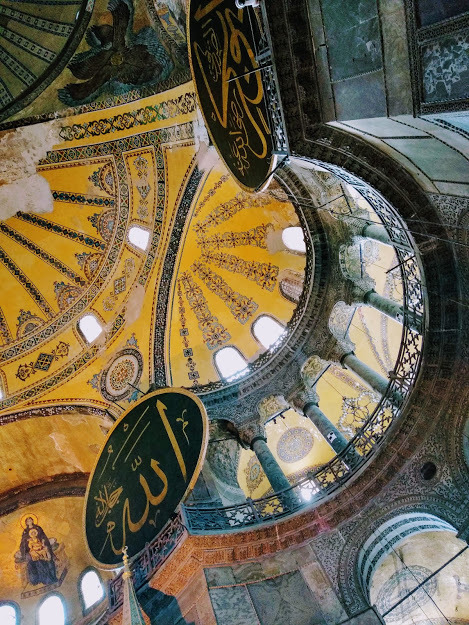
After capturing Constantinople, the Ottomans removed or plastered over mosaics and images of Jesus, Mary, Constantine, Justinian and various other Byzantine Emperors from the walls, as Islam prohibits representation of human figures because no one but Allah is allowed to create. This is the reason why Topkapı, Blue Mosque and all the other Ottoman palaces (Not Dolmabahçe; we will come to that) are covered with exquisite tiles and carpets as decoration and not paintings, as a guide we shamelessly eavesdropped at Blue Mosque tried to explain his captive (and paying) group. Orhan Pamuk’s masterpiece My Name Is Red, the book that put in me the fascination to visit Istanbul, devotes a considerable portion of his book discussing this aspect of Islamic philosophy, of prohibition of creating realistic portraits, thereby challenging Allah. This attitude is reflected even now, with reports of Modern day Saudi Arabia destroying historical artifacts around Mecca to build hotels. Or ISIS destroying Palmyra. Sultan Mehmed II, the conqueror (Fatih, which now renders its name to the UNESCO heritage historic area of the old city. Note similarity to the Hindustani word ‘Fateh’) ordered a massacre of Roman residents, then asked for muslim immigrants to settle Constantinople, and converted Hagia Sophia, the ‘Church of Wisdom’, into a mosque.
The images that we see of Jesus, Mary and the other kings were restored by Swiss-Italians Fossati Brothers, entrusted with the task of renovating the mosque by Sultan Abdulmecid to renovate Hagia Sophia. Many old, precious mosaics are still lurking under the ones plastered over.
The church that stands today is actually the third iteration. Two were destroyed by fire and riots before Emperor Justinian built the third in 537 AD. The ruins of the 2nd Ayasofya found in excavations are put to display outside the building. The White marbles and sheeps will catch your eye.
Once you go inside, you will see hung on the wall a proclamation by Mustafa Kemal Ataturk, the father of the modern Republic, and his cabinet secularising the mosque by converting it into the museum. This makes one realise that Hagia Sophia houses inside itself the history and the character of the city of Istanbul, and of Turkey itself. From Romans, to Ottomans, to the new secular republic, Ayasofya is a time capsule, having stubbornly endured earthquakes and conquests and the hyper-secularisation. It feels as if the monument now stands before you and whispers to you the story of Istanbul and indeed of civilisation it has witnessed. For those with a sense of history, Ayasofya cannot be anything but fascinating, and there is no building like it anywhere.
As for the grandeur of the interior, I will let the images do the talking.
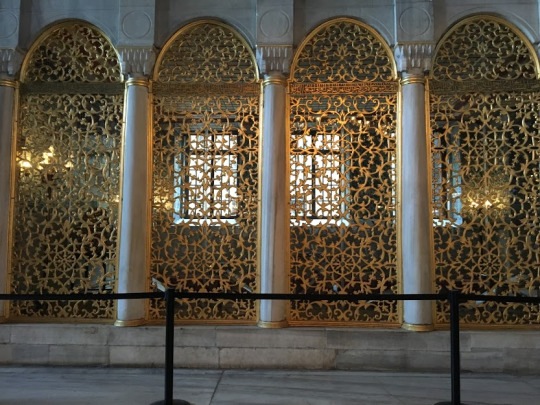
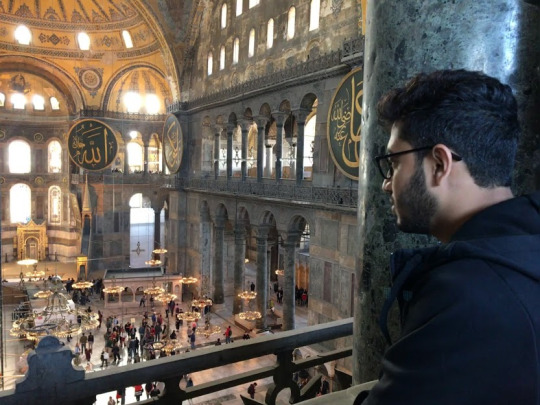
Pro Tip: Get the ticket for Ayasofya, Topkapı and Archaeology museum together for 135TL instead of getting them individually. All are worth a visit.
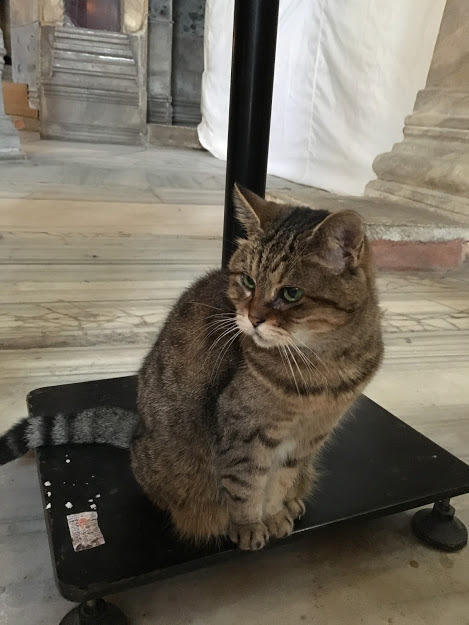
Hey kitty kitty! Istanbul’s cats, like her Sultans, are fat!
Blue Mosque, the second jewel of Sultanahmet sitting right next to Ayasofya, was unfortunately under renovation, so a lot of it was covered. We managed to witness some of the famed Iznik tiling anyway. Note how this and all of the other mosques in Istanbul, and in fact the rest of the Turkey, are influenced by Ayasofya. One interesting thing we noted was that the instructions outside the gate urges the visitors to refrain from, among other things, kissing inside the Mosque. Helpful tip.
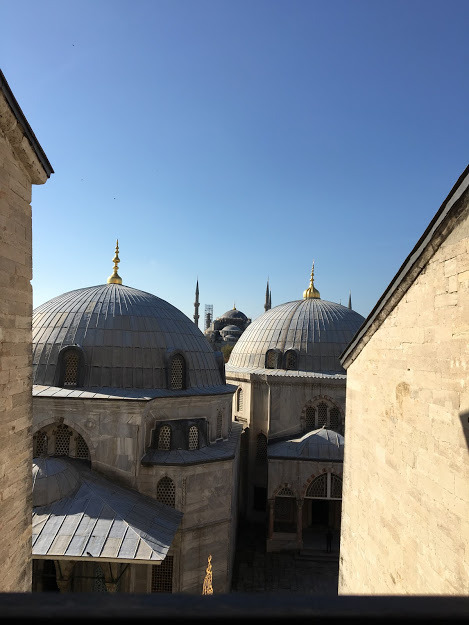
Blue Mosque seen from Ayasofya window
The fame of Blue Mosque, or Sultanahmet Mosque (Camii, pronounced Jami. Similarity with Hindustani to be noted) somewhat eclipses that of Suleymaniye Mosque, named after Suleiman the Magnificent, the ruler during the golden ages of Ottoman Empire. That should not dissuade anybody from paying it a visit, because it is indeed at par with its more famous counterpart, and lot less crowded. We obviously enjoyed it more because of the restoration at Blue Mosque. The minimalism and unassuming nature of the interior complements the huge size of the interior. Free pamphlets and small books explaining Islam are distributed inside, and we helped ourselves to some.
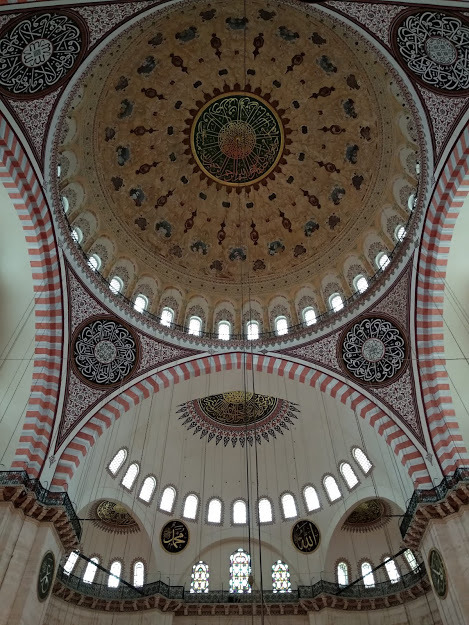
Walls of Suleymaniye Mosque
Steamy
At night, we decided to try one of those famous Turkish baths, or Hamam. Most hotels will know who to call for their customers, and Mihriban hooked us up with Gedikpasa Hamam, somewhere in the mesh of cobblestoned streets, touristy hotels and heritage structures that is Sultanahmet. It was pretty cool because I had read that it was one of the oldest Hamams that still existed, probably the oldest, as it was established by the eponymous Pasha in 1453. Turns out, they have a pick-up from and drop-to service, and a big van pulled up in front of our hotel. We climbed in, and off it went, cruising confidently like it had done before umpteen times through the narrow lines and sloped terrains to an old establishment with a facade that might render it inconspicuous among the densely packed shops and restaurants, but on entering you will find yourself amongst a relic, a living history.
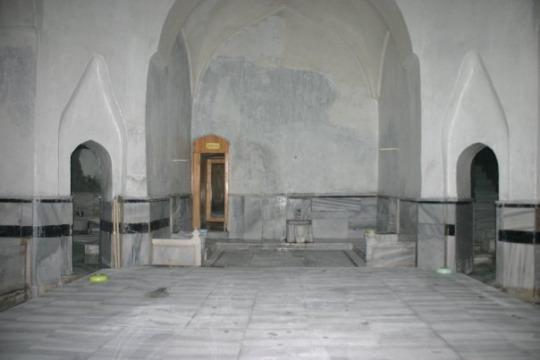
You are told about the various services by the receptionist, like you can use the Hamam yourself for about 80 TL, or you could get a foam bath and massage from a staff for 120 TL. For a few more bucks, you could get a honey massage, but we didn’t fancy it that much. You are led to a room where you keep your belongings and change into a towel,and tie the key on your wrist. After washing oneself, one enters the steam chamber.
The steam chamber, the actual shvitz, has marble flooring and plastered ceiling, which is dome shaped, and an aura of antiquity that makes you realise that you are sharing a public bath with 550 years of history. This feeling, perhaps encapsulates the entire spirit of Sultanahmet and Istanbul itself. The warmth of hot steam soothes you from the cold of outside, and the steam feels cleansing, although one’s breathing becomes a tad bit belaboured due to the temperature and steam content of the air. Soumya rushes in and tells excitedly that there was a guy who just took of his towel in the corridor without a care!
And soon somebody came to take out ours. An old gentleman, whose name I couldn’t catch because of the language and accent barrier asked me to sit in a corner, near a tap with a basin below it created out of a parapet of diminutive height. He started rubbing me with the foam HARD, as if trying to wipe away my epidermis. Tiny, black-brown, spindle shaped dirt started to roll away as he pulled back his hands during the violent rubbing, leaving a pink skin it its wake. He did this on the limbs, and then in the central raised floor, made me lie down, and removed my towel. For the briefest moment, I was fully in my birthday suit, lathered up it was far, far from being sensual. I also managed to catch another gentleman getting the same rubbing down. Only he was upside-down, with towel covering the valley between the hills, making it perfectly clear what awaited me. The awkward agony ended when the gentleman rearranged my towel to closely cover the unmentionables, and begin the intense massaging that flitted around the boundary of pain and pleasure. Then he overturned me and proceeded with my back and sciatica. I was able to muffle my screams of agony/ecstacy, but Soumya was crying (moaning?) out loud in response to his masseuse’s strong hands.
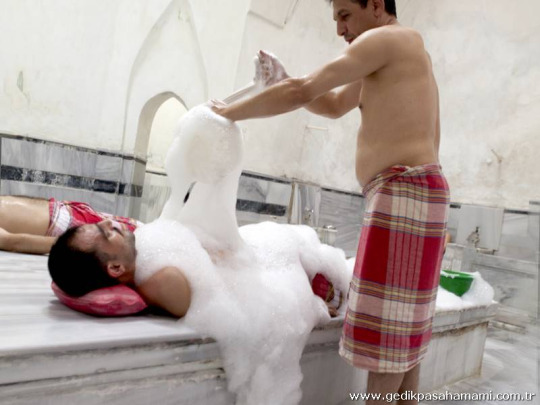
A file photo from the Hamam website
At the end of it, he took me back to the bathing place and cleaned off the foam. Shook hands with me and said something with the word 50. Either he was talking about his age, or about the tip (Which would have been too much, almost half the cost of the whole service).
After one is done with steam and massage, one can wash it off and cool it in a green pool in a cave like niche, finishing off a wholly tranquilizing experience in a high.
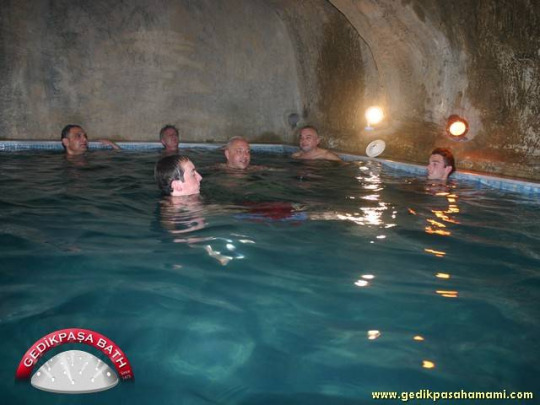
The Tale of Two Palaces
Topkapı Palace is actually a Royal complex, with multiple courtyards having buildings and rooms that served various royal functions: schooling, receiving diplomats, circumcising princes, meeting general public. Standard stuff. The highlight of Topkapı though is the one room where they don’t allow photography: The room that contains artefacts that are believed to be personal belongings of prophets in like Moses, David, Abraham, and Muhammad. It also has sacred relics from Kaaba including the door for the Kaaba. The caliphate passed on to Ottomans after their conquest of Mecca in 1517, and they brought in many holy relics from Mecca to be stored in Topkapı, including dentures and hair of Prophet Muhammad.
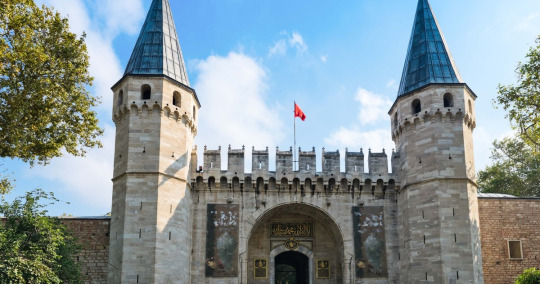
Courtesy: getyourguide.com
One gets a peak of the lives of Sultans in the empire from visiting the harem. Harem is the private part of the palace, and is where Sultan, his countless mistresses and the head of the household, the Valide Sultan or Sultan’s widowed mother lived. There is a separate ticket for Harems in all palaces, about 30 TL. A package deal may cost less, so take it. Since any given Sultan with his countless harems is bound to have many children, all equally entitled to the throne, almost every succession involves fratricide i.e. potential successor killing off all of his brothers to establish his succession. After Mehmed II, as I learned later through fascinating Wikipedia (back home) and Quora articles, the practice was even codified and considered a rite of passage! As I looked at the corridors, the walls, the exquisite washrooms and the magnificent rooms, I could not help but wonder of all the drama and palace intrigues that would have taken place in the harems with their shehzades, Valides, concubines, wives,eunuchs, soldiers and assassins maybe?

Panorama of the entrance
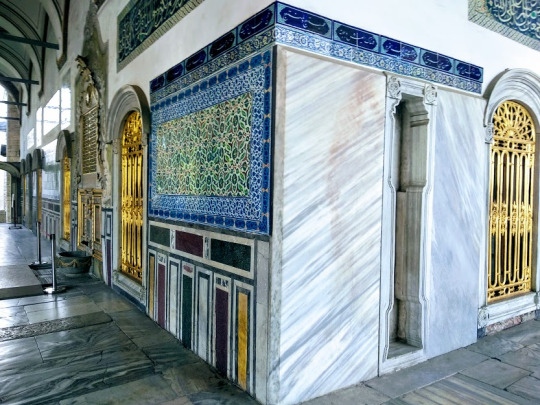
Famed Iznik tile works
One of the most remarkable dome interiors in the beautiful white dome of the library. Mesmerised, we spent longer than usual staring at this stunning dome. As mentioned earlier, the main decorations in the palaces and mosques are accomplished using tiles and carpets since representation was not allowed. There are 1-2 paintings in the administrative chambers though, that too miniatures.
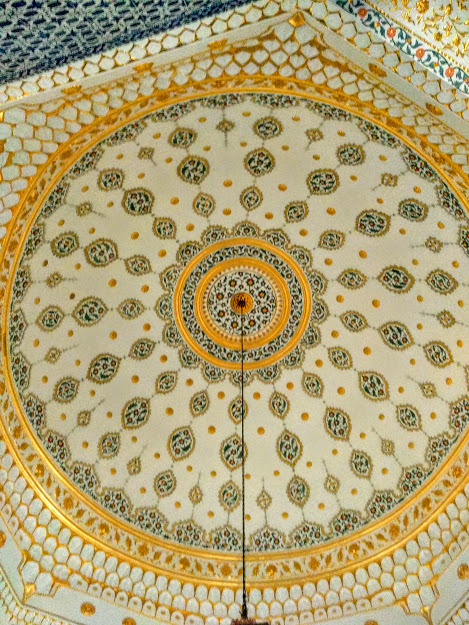
The Library dome
Topkapı is located at the tip of Fatih area overlooking stunning views of Bosphorus. This makes slightly overpriced restaurant at Topkapı, Konyali, worth a try, because as you can see, it makes for a kickass picture.
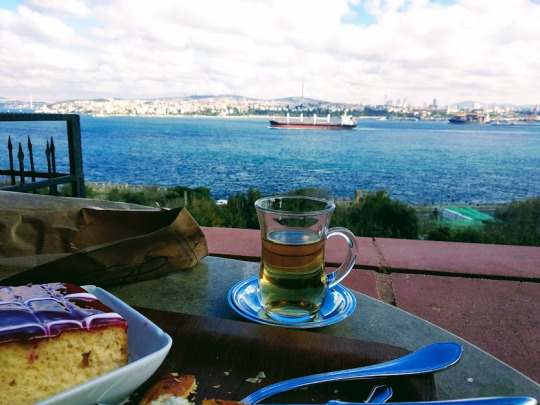
Bliss atop @ Konyali restaurant
For all its glory and its size, Topkapı is still somewhat...humble. Of course, it is very difficult a claim with your gates, size, views and separate rooms for shehzade’s circumcision, but if you compare it with a typical European palace, like say The Hermitage of St. Petersburg (of which I have only gone through a coffee table book), the palace complex is unassuming and not grandiose.
This realisation strikes you only when you visit the Dolmabahçe Palace. Sultan Abdulmecid I had a somewhat similar idea, and decided that he deserved a palace just like his European peers elsewhere, even if it costed the empire a quarter of its tax revenues that year. The financial hole that the palace made contributed to the empire’s nickname as ‘the sick man of Europe’.But what a hole! The tourists with a 90TL combo ticket (Muzekart, in case any overplanned enthusiastic tourist has taken, is not accepted here) would certainly say it was worth it.
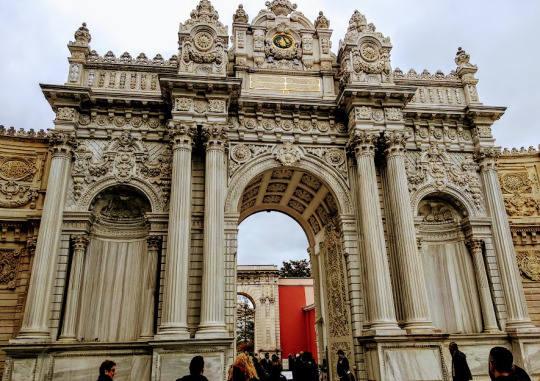
The European style imposing entrance
Dolmabahçe means ‘filled-in Gardens’, and before entering the palace after the majestic entrance, you do see beautiful gardens all around. Do take a lot of the photos, because inside photography is not allowed. My friend tried to take some, but was spotted by the guards,who only asked him politely not to do it again. Because not taking photographs when you see something like Ceremonial Hall at the end of the palace tour is just a shame. So here is an image with bent perspective of the impossibly huge hall with a chandelier that was a present from Queen Victoria, because I suppose it is impossible to capture the grandeur of the entire hall in a single frame. Places like these make you feel like staying longer because of the mild fear that there is one bit of detail you might have missed out.
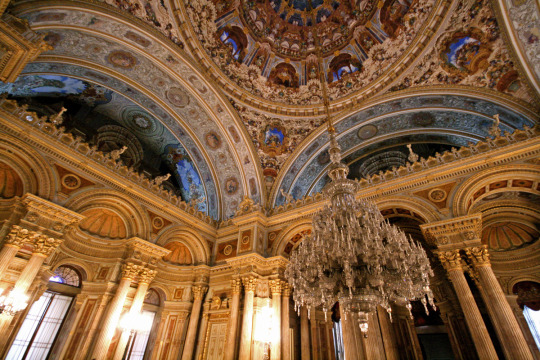
Ceremonial Hall
Dolmabahçe palace is not administered by the Ministry of Culture and is not a full museum, but is administered by Ministry of Palaces, because it is an amazing venue for hosting important summits and State dinners.
The highlight of Harem tour, that is after the palace tour, is the bed draped in National flag where the father of the Turkish Republic, Kemal Ataturk breathed his last. The clock by the table indicates his time of death. Every year, at 0905 on 10 Nov (Just 1 day after we left, because I did not know of this), the entire nation comes to a standstill in remembrance. Check out a link I have provided at the end and be amazed with the respect he commands. Also, it is recommended to read up about Ataturk, a fascinating figure in the 20th Century whose ideas about secularism in a 96% Sunni Muslim country that once held the keys to the Kaaba are at the same time inspiring and polarising and a bit of a cautionary tale about repercussions of imposing radical changes into a society.
Pro Tip: When I asked for Turkish Coffee with sugar, they gave me a small Lokum (Turkish Delight) with it. It was covered in powdered sugar, so foolishly I put it in, before realising my mistake. So, don't do that. The right way is to take a sip, then take a bite and so on. I had to fish it out with the stirrer. Fortunately, it was still very, very delicious.
Dolmabahçe is out and out a European palace, a far cry from spartan austerity that is the hallmark of Islamic teachings. It was so overwhelming that we did not possess any more mental strength to go see the painting halls consisting of the works of art commissioned by the Europe loving Sultans and many by the last Caliph, a patron of arts and a painter himself, Abdulmecid II. History buffs will be interested to know that this Caliph’s ousting prompted the Khilafat Movement in India during the WWI. We then headed to ‘check off one of my items on bucket list’, however cheesy and corny it might sound.
Kemal and Fusun
Orhan Pamuk is a divisive figure in Turkey. His Nobel win is touted by many as political, to force the hand of the state in the suit against him claiming he insulted the republic by recognising or hinting at Armenian Genocide. He is a somewhat liberal figure, not liked by nationalists in general. Mihriban, our hotel receptionist, guide and friend also stated that she disagrees with the politics of Pamuk, but seemed fascinated by the idea of the museum and wondered why she never went there.
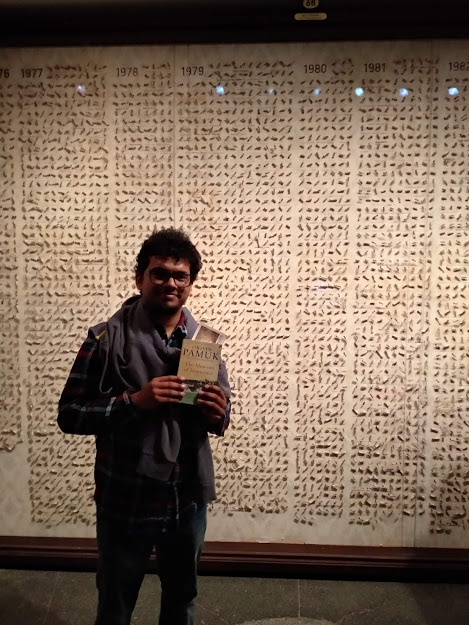
Me with each of the 4000 cigarettes that touched Fusun’s lips and had a mark of her lipstick to show for that. Pamuk’s protagonist is a melancholic, lovelorn, a a teeniest bit creepy (at least by today’s standards)
For people like me, borderline fanboys, we love his fascinating depiction of the mundane and his brilliant analysis and exposition of a nation struggling with its Westernising aspirations and traditions, and his exploration of a city that has a hankering for everything European and longing for the glorious days of the empire. My Name is Red and Istanbul: Memoirs of a City (that I read after coming back) are highly recommended.
Museum of Innocence is also a similar work where the protagonist who is somewhat like the author himself, belonging to the ‘society’ that shuns everything traditional and lives among the cocktail parties and fancy luncheons and everything else Western, falls for his cousin, a girl from a traditional Muslim family living in a crumbling middle class neighbourhood. Kemal has a bit of kleptomania which he likes to call his fascination with ordinary items, and everytime he visits Fusun’s house, he steals a small item from there. Eventually his collection grows so large that he makes a museum out of it, dedicated to Fusun. Orhan Pamuk made the exact museum with every item Kemal ‘stole’ in the book at the location where Fusun’s family ‘lived’. This fascinating concept of a museum complementing a book makes it a must visit if one admires Orhan Pamuk. What more, if you have the book, then your entry is without fee, and on a particular location in the book, there is a box where they stamp it. The book keeps referencing the museum and this stamped space is indeed a part of the story, making the book and museum complete in themself! Each chapter in the book has a shelf with exhibit dedicated so a Pro Tip: Buy an audio guide for only 5 TL. Each exhibit is explained by Orhan Pamuk and an actor essaying the role of Kemal (Yes, Orhan the author indeed makes an appearance in the book. As I said earlier, the book is complete in itself).
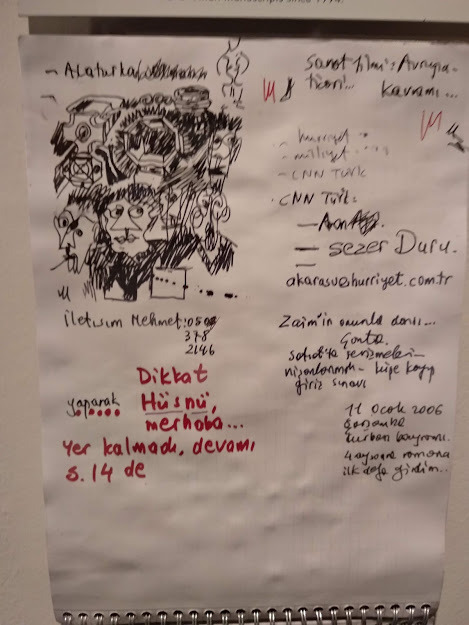
Pamuk’s scribbles
It is recommended that one visit the website of Museum of Innocence to check out Orhan Pamuk’s idea of a Museum.
The Most Instagrammable Neighborhood
Karaköy is probably called that because of its interesting graffitis, mesmerizing cobblestoned narrow alleys and the Galata Tower that rises from the middle. Travellers are forewarned that there will be a huge line at the Galata Tower in the peak season. But once you get on the top, you know why.
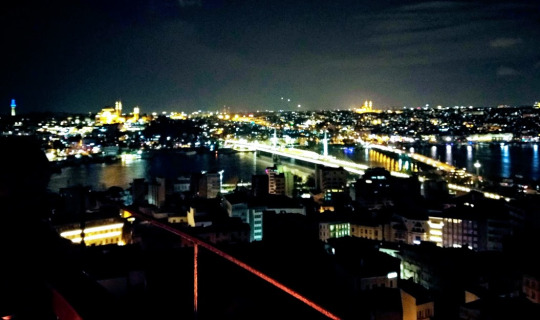
Galata Tower was built in the Genoese colony as a sentry tower and also as a tower to forewarn about any fire incidents in the city. So it is ironic that the tower itself fell victim to fire, and that is one amongst the umpteen times the tower has been damaged and rebuilt. It is now the primary fixture of the Golden Horn and the Istanbul skyline, and from the top, one can see all of Istanbul, from the Topkapı Palace, Ayasofya and Blue Mosque on one side to brightly illuminated 15 July Martyrs Bridge (formerly called Bosphorus bridge, renamed after the 2016 coup attempt) on the other. We climbed (rather, took an elevator) on top in the evening, in a crisp and beautiful weather, and then something fascinating happened: multiple Ottoman style mosques interspersed across the city start playing the Azan with remarkable synchronization. There are few experiences that are as unforgettable as this one, and this indeed is a quintessential Istanbul experience. It would have been nice to have a çay(chai) at this moment, but we took so much time to soak up the views of the strait and the streets (remember the FOMO anxiety we talked about in the palaces section?), that by the time we went inside to the restaurant at the top of the tower, it was closed.
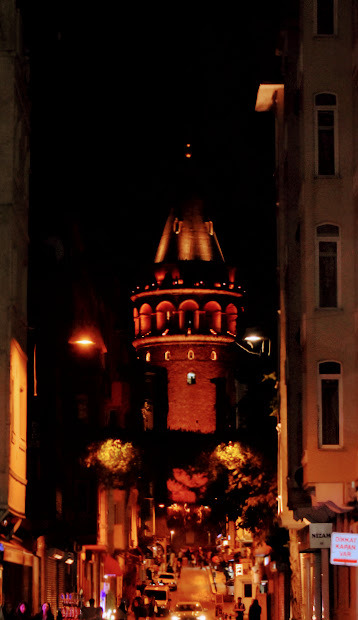
Galata Tower
There was a 4D Istanbul tour waiting for us downstairs on the 3rd floor though, which takes on this simulated helicopter ride across and inside the major landmarks in the city. It’s fun, despite of it sounding a bit pedestrian (I am talking about the population that finds things like these and roller coasters nothing more than gimmicky); go for it.
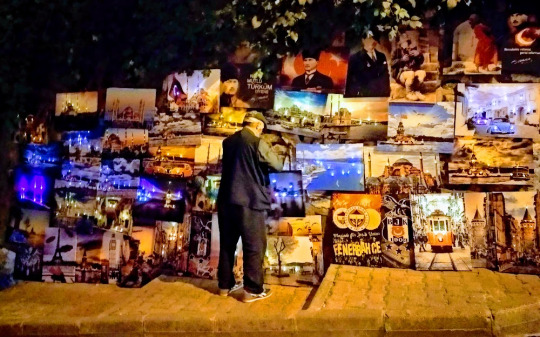
The other thing that one must do in Karaköy is simply walk around and soak up the sights and sounds. And eat a delicious, mouthwatering, big baklava at Karaköy Güllüoğlu for 25 TL. Syrupy, crispy, filled with pistachio nuts, one must definitely savour as much baklava as one can while in the city.
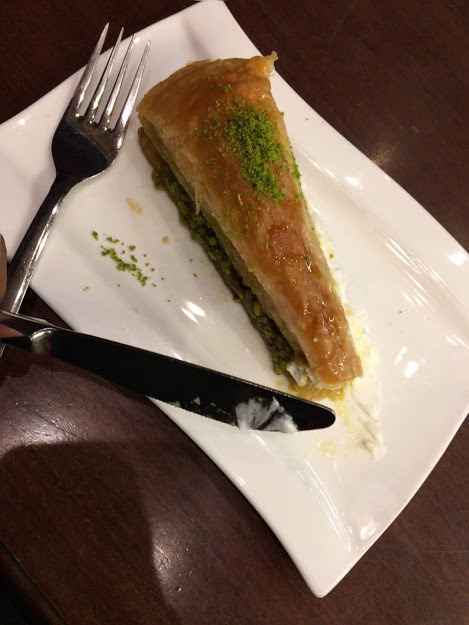
Mouthwatering Baklava at Karaköy Güllüoğlu
To Black Sea and beyond
No textbook Istanbul trip is complete without a ferry ride across/in the Bosphorus. Bosphorus, after all gives Istanbul ALL of its identity. Everything that the place is, it’s because of the strait. The strait joins Black Sea and Mediterranean Sea through the Sea of Marmara and The Aegean, making it all important and a prized possession. The location proved so strategic that more than a dozen sieges were attempted on the city, before Mehmed II actually achieved success. Thar is why the Greeks, the Romans, and the Ottomans wanted a piece of it, why Prophet declared that whoever conquers Konstantiniyye is the most blessed. The strait is a clear boundary between the great continents, and more importantly great cultures of Asia and Europe, of Orient and the Occident, and Istanbul is the meeting point, the city with the dual identity. The city is testament to the fact that much of human history, culture and language is all about geography.
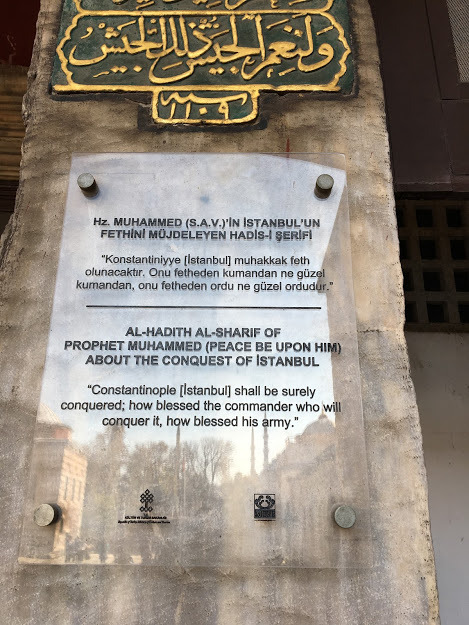
Muhammad’s proclamation on the blessed conqueror of Constantinople (Place: Ayasofya)
So, Bosphorus Cruise. On Sultanahmet, many will try to sell you a cruise that will make a trip of the strait, the golden horn, will have a buffet, all for €20. Or there is the famous Big Bus Istanbul tour where they will take you to an all day tour of all the Istanbul places and a cruise for €30 or 60. You can go for the latter if you are on a layover trip. You can ignore the former; never too good an idea to go with the touts. You can get all the information about a cruise with food and entertainment for €20-60 from the front desk of your hotel, a very good reliable source of information, and even better if you have a rapport with the receptionist.
Or you can rough it out (not really) and make use of one of the most bang for bucks public transport service (details of Istanbul public transport network will have a dedicated section; don’t worry): Şehir Hatları.
Şehir Hatları is the City run ferry service that, apart from its regular services to and fro the opposite banks of the bosphorus, also runs a 6 hour cruise all for, drumroll please, 25TL! There is one cruise per day and it picks you up from the Eminönü docks at 1000 hrs all the way over to the village of Anadolu-Kavagi near the Black Sea and brings you back by 1630.
The cruise itself was sparsely occupied, probably due to tourist season ending. Which is a boon because in peak season, the cruise gets full pretty quickly. Waiting on Eminönü docks for our ticket we met this guy who had a giant parrot on his shoulder, the size of which freaked out Soumya. He placed the parrot on Soumya’s shoulder and offered that we click a photograph for 15TL I think. We politely refused, so here’s a stock photo.
The ship had 3 floors, with lower deck having cushioned benches and table a la a classic American diner, with a small stall serving snacks. The mid and top deck were outside, and if you can tolerate the cold, cold breeze, you will see sights unparalleled. As Hagia Sophia, Blue Mosque, Suleymaniye mosque, and Galata Tower to your right seem to get farther and farther away, you get to see the iconic Istanbul skyline which I can never get used to. The first stop is Üsküdar on the Asian side. This neighborhood, considered a bit conservative as opposed to the more liberal and open European side, is famous for its sunset views, which we missed by a few minutes on our last day, but still enjoyed çay along the banks, where many had set up cushions for tourists and lovebirds to enjoy with Bosphorus views.
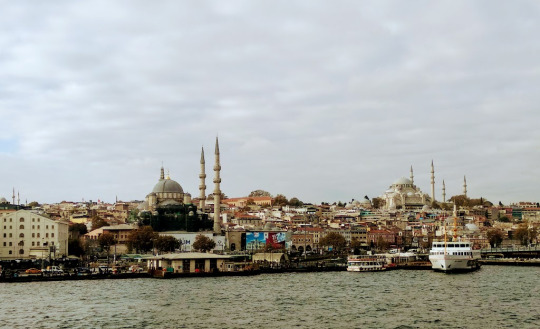
As we approach Karaköy, the view is dominated by the imposing Dolmabahçe palace. Along the way you pass 2 of the three bridges that connect Europe to Asia, numerous Bosphorus mansions called Yalis and the castles of Rumelihisari and Anadoluhisari. I did not know at that time, but Rumelihisari or Roman Castle was built by Mehmed II as a sister castle to Anadoluhisari which was on the opposite banks, and together acted as a throat or strait cutter, cutting off the rest of the city before laying siege. Other notable sight were those of gargantuan cargo vessels that sailed by and the seagulls that competed with our cruise, making use of wind currents to float and making loud noises. You will always find these noisy creatures chasing a ship, probably for food, and the Bosphorus is filled with these seagulls; they are what pigeons are to our cities: a regular feature that are sometimes just pest.

Bosphorus Panorama
Our last stop in the onward journey is the tiny fishing village of Anadolu Kavagi, which is directly opposite to the penultimate Rumeli Kavagi. The word Rum is used to denote Roman Anatolia or simply Roman or Rome. The Ottoman Padishah used to have the title of ‘Kayser-i-Rum’, the descendant of the Romans, and omission of this title in diplomatic communication was casus belli, or cause of war. The famed Sufi saint and poet Jalal ad-Din Muhammad has the title ‘Rumi’ attached to him because of his place of operation, in the Anatolian heartland., specifically Konya, an overnight journey from Istanbul by road. Although he is also known by the name Balkhi, placing his origin at Balkh in what is now Afghanistan.
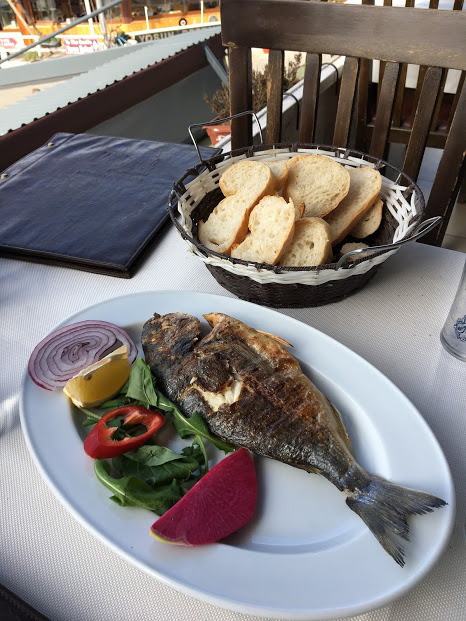
Seafood at AK. Most good restaurants serve a basket of bread by default, a complementary feature. Water, you gotta buy separately.
At the AK, you have a stoppage of 2.5 hours to feast over some delicious seafood (yours truly refrains from meat and prefers to enjoy it vicariously) and visit the Yoros Castle, an outpost built by the Thrace as a strategic watchtower. The village is now occupied by the fishing community and the Turkish Armed Forces. Once you start walking around searching for a place to eat, as in any other Istanbul tourist area like Sultanahmet,the restaurant maitre-d’s (if they can be called that) start to cajole you for your patronage. We chose a seafood place with nice Bosphorus view, and as recommended by the immaculately dressed waiter, ordered a fish and something vegetarian that you don’t care for anyway (although there are good vegetarian options in Turkey). And we ordered Rakı .
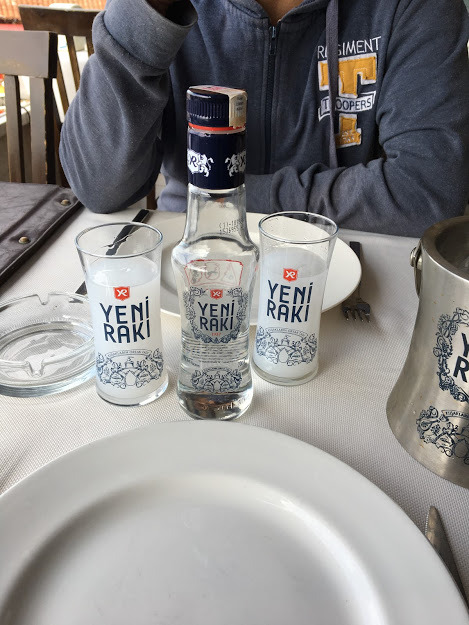
Rakı
Rakı is Turkey’s national alcoholic beverage made from rice and has a strong anise or saunf taste. One dilutes the Rakı with water and it turns white from colorless! Soumya exclaimed that it looks like a local beverage popular in Orissa called Handiya.
And it gets you drunk fairly quickly, leaving you in a happy merry kind of stupor that fortunately or unfortunately dissipates within an hour. We were laughing uncontrollably, consuming the lunch extra slowly and by the time we sobered and paid up, we had already spent an hour and a half in the restaurant. Which maybe commonplace in Europe but for the Indians, almost unheard of!
This left us just about half hour to climb up the hill and visit the Yoros castle (fully sober by then, by the way). The castle itself lies in ruins, but the views of deep blue strait that merges into the Black Sea, and the beautiful Yavuz Sultan Selim bridge that straddles the waters gave us the aforementioned FOMO as the time was running out and we would be in trouble if we missed the ferry.
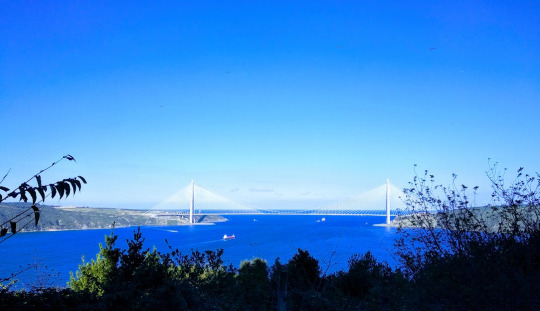
The hastily clicked Yavuz Sultan Selim Bridge. The water body beyond is Black Sea!
The return was mostly spent in soaking up the scenery and staring at the seagulls.
The Ice Cream Trick
Dondurma is the Turkish ice cream made of a resinous substance that allows it to stick to a surface and defy gravity. This enables the ice cream guys to perform that trick where they pretend to give you the ice cream but snatch it away, drop it but really it sticks to the big handle, do this 3-4 times before handing the ice cream over.
So then, at Taksim Square where we are being entertained by this ice cream cum performance I told Soumya in hindi that let’s play the same trick and give him money but take it back. The guy sort of read our mind and pointed at a spot in the table saying ‘Put it here. I have been doing this a long time.’ Ah damn!
Another performance with food we saw was at a Kebab place in Sultanahmet where I ordered a vegetable hot pot, which they served with a sticky rice. They filled the earthen pot with the veggies like mushrooms and put it up on a small stove of smoldering coal, brought it to us and did a little performance before hitting the top of the pot, and off went that piece of pot flying. You will see this trick being performed in many restaurants in Sultanahmet.
Touristy things are fun, who knew.
Find the link to a Dondurma trick at the end. Keep searching for more, fun way to waste more time on YouTube.
Pro Tip: For the vegetarians out there, plenty of mediterranean salads like abaganoush are available in almost all restaurants. Or do what I did in a small restaurant near Cemberlitas: Ordered a chicken roll without the chicken!
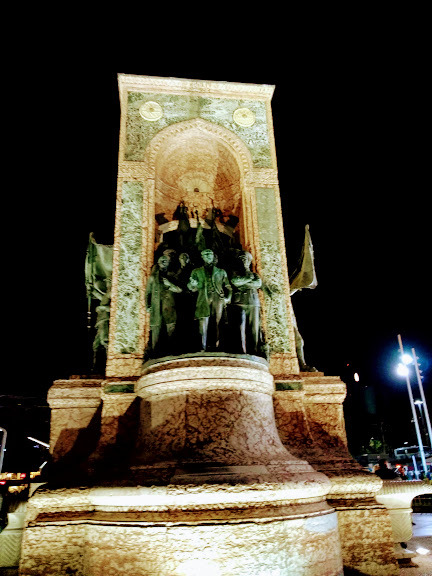
The monument to the Republic at Taksim Square. The gentleman at the front it Mustafa Kemal Ataturk.
So we boasted (or opposite of it) to Mihriban that whatever crowd she thinks we will encounter at Taksim, it can never be as bad as India, because well we are the crowded country, aren’t we? We were proven so wrong at the historical Istiklal Caddesi or Istiklal Avenue near Taksim. Generally we did not find Istanbul crowded, but that may be attributed to the end of peak tourist season. But the crowd at Istiklal Street on a weekday was comparable to the crowd at, say, Connaught Place or Chandni Chowk! The street is lined with Ottoman era buildings (European style, so perhaps late Ottoman, when European influence became marked), shops, restaurants of all kinds-doner kebabs to your KFCs and Burger Kings, intriguing street performances here and there, and the classic Taksim- Tünel tram line. While the trams running in Istanbul, used for commuting, are all fast and modern built by Alstom, the Taksim- Tünel line has been kept mainly as an attraction, the slow old trams of the olden days. There is just one coach that does the up and down from Taksim to Tünel, and it is crowded by tourists who want the touristy experience of the Old Istanbul. We decided to skip that and just walk the whole way, from Taksim to Tünel and beyond. At Tünel, you have the Funicular line, which is essentially 2 coaches on a long looped rope and pulley mechanism such that when one coach goes up the other goes down. Mainly used to go up and down a sloping, hilly area.
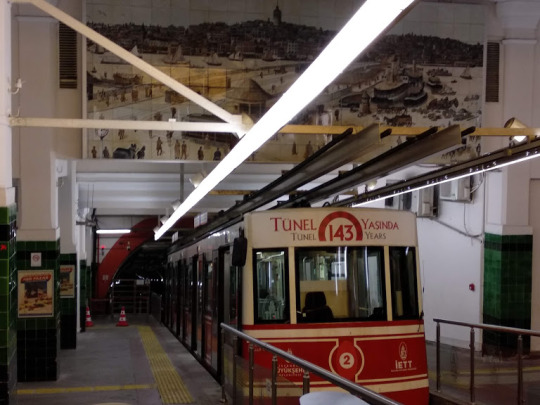
Historical Funicular at Tünel
There are streets that branch out of Istiklal with interesting restaurants, all having a musical performer to entertain their guests. Unfortunately the restaurants are so close that you can here 3-4 guys singing loudly at the same time, resulting in utter cacophony!
We managed to find a vegan Lebanese restaurant in the street, and had delicious falafels there.
The People We Met
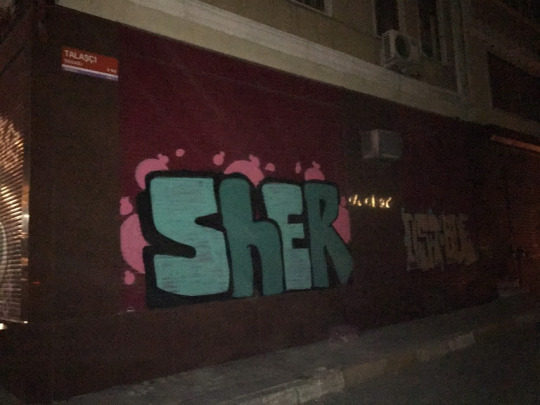
Graffiti we encountered on a walk in Beyoğlu
One important component of travel to a place is the people one encounters or meets. While I myself have difficulty in opening up to strangers, it helps if I have a slightly more outgoing companion or a person easy to talk to.
Which is where Mihriban, our 30 something Kurdish friend from Ankara who has a degree in Turkish Literature, likes fitness and does not like Orhan Pamuk, and has a disarming style and persona comes into picture. She also very kindly took us to Suleymaniye Mosque, shop at Mahmut Pasha and the nearby more famous grand bazaar, and a rooftop coffee with lokum with views of Golden Horn and Bosphorus, which the reader may tire of but I most certainly did not.
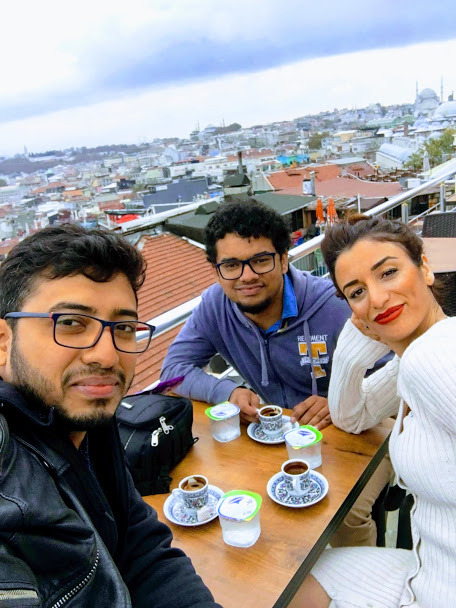
Turkish Coffee at a rooftop joint
One stop at Mahmut Pasha we took was to buy some Shawls, beautiful silk ones which I later learnt were called stoles. I realised that I was bad at picking clothes for women when Mihriban pooh-poohed almost all of my choices (Thank God). After shopping for a good 8-9 stoles between the two of us, the shopkeeper decided to offer us some çay (tea), instead of giving us further discounts. In a typical Indian manner, we finished the tea while Mihriban had not even reached the halfway mark. This led shopkeeper to exclaim in surprise that we finished it off way to quickly, and Mihriban interjected that we must savour things more deliberately.
From the crowded Mahmut Pasha,filled with vendors selling all the varieties of lokum possible, we moved to the Grand bazaar, another quintessential Istanbul attraction with vendors selling everything from lamps to carpets to tiles to lokum to spices-you know, your typical Oriental market, only way expensive. We did get our hands on some beautiful Iznik tile coasters at Iznik Works in Grand Bazaar. The Iznik form of ceramic pottery originated from the Iznik towns and was very much in demand by Ottomans to decorate their palaces and mosques. Be it Topkapı Palace, Suleymaniye Mosque or Blue Mosque, you will find these tiles adorned as mosaics everywhere.
For some reason, we decided to lunch at the Burger King at Cemberlitas, and I had the one vegetarian option available on the menu- a bean burger. It was yum.
ProTip: There are types of Lokums that I gather are available. One is a slightly cheaper one that resembles those dense gelatinous halva we have in India. The other types are more expensive (100TL for a kg) that are filled with variety of nuts and have richer flavour diversity. Buy them either from franchise stores like Mado or Hafiz Mustafa or explore on your own, in Sultanahmet, Mahmut Pasha, Grand Bazaar, or that bazaar near Blue Mosque. Also eat tons of Baklava, an advice worth repeating.
ProTip: Much to my frustration, during a bit of googling for this piece, I discovered that Zomato operates in Istanbul! What! And oh, by the way, Wikipedia is banned in Turkey. This I discovered only when I returned. That’s why I was not able to open there.
Mihriban also used to make çay for us in the evening when we had returned from our trips, and we would discuss about religion, cultures, exercise, family, living in Istanbul, and how Istanbul is the number one destination for bald Arab men to get hair plugs (You see a lot of bald men with bleeding head or head covered with cotton) and so on. Mihriban’s demeanor brought in many friendly guests of the hotel, and one such was a wise old man from London called Abu Bakr John, who came with his wife Hatija. Abu-Bakr was a Mauritian immigrant to London, and had a little bit understanding, at least an inkling of Hindi, because obviously his forefathers were from India. His wife Hatija adored Shah Rukh Khan, just like Mihriban adored Aamir Khan. Mihriban claims to have seen all of his movies and to prove her claim, she referenced the giant colorful ass-chairs the three protagonists of ‘3 Idiots’ sat on. Then we proceeded to talk about the latest bollywood film she watched, ‘Padman’, and I showed her the TED talk of the actual Padman, Arunachalam Muruganantham, on Youtube with Turkish subtitles, which she found pretty delightful.
We also talked about the Turkish TV viewing habits, and how Turkish people prefer watching Indian soaps over local fares, which is more popular in Azerbaijan (Azeris watch Turkish soaps, Turkish watch Indian series, Indians watch American series and Americans just watch their own!) Also, Mihriban, and by her I guess most of the Turkish TV viewers, think that the streets on India is filled with cows, the cows that we worship, which she found amusing. I can’t say I don’t agree with that stereotype.
We also tried to chat with a bunch of Moroccan ladies from Brussels in the lobby. The trouble was that they knew only French and Mihriban had to use Google translate for the simplest of the things. We were also talking about Muslim marriages and the concept of Mehr when the Belgian lady asked whether we were Muslims. I said no. We tried telling her, probably through google Translate that we were from India and we were Hindus, and she just replied “Buddhists?” We nodded and just left it like that. While retiring for the night, we were talking about how difficult French was and I tried to pronounce ‘Au revoir’ as O-re-vwa. One of the Belgian ladies heard us and said what I thought was ‘Au wa’. The guttural r is simply not an Indian thing.
Transportation
This is a Protip chapter. Much to the annoyance of many, I have a love for efficient public transport. And Istanbul’s has one USP: Integration. From Ataturk Airport, if you have to go to say Üsküdar, you can take a taxi that will drive you all the way to one of the Bosphorus bridges and drop you there, and charge a bomb. Airport transport from our hotel, which is on the European side, same as Airport, takes €60, which is astronomical. The cheaper and more pleasurable way is to take a metro from the airport, change at Zeytinburnu or Yenikapi to the tram, take the tram to Eminönü Tram station, cross the road to the Ferry station and hop on to one of the Şehir Hatları cruise. And it is fast with no hassle. Metro has a frequency of 10 min, tram of 2 and boats of 30, and purchasing an Istanbulkart at an automated dispensing machine at every bus, tram or ferry station, which is just 6TL, and rides that are equally nominal means you have covered 20+ km journey in 15-20TL! The transport system that connects the massive city integrates Metro, Bus service, Tram, Funicular, Ferry, and an undersea train service called Marmaray (which we unfortunately did not try).
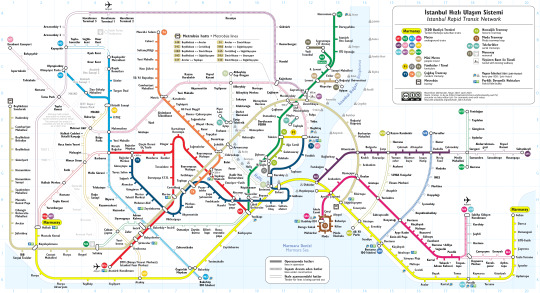
Istanbul Transportation Map. Zoom/open separately for clearer view.
The Alstom built trams are ridiculously fast and modern, except the antique one at Taksim. Therefore, be careful when you cross the roads.
TLDR
Hotel: Best place to get a hotel if you are in Istanbul for the first time and if you want to visit all the sites is of course the Sultanahmet area in Fatih district, as major old city attractions are all within walking distance, there is a seaside promenade nearby for sunrise/sunset strolls/jogs, and lot to eat! We booked at Harmony Hotel Istanbul, a cozy hotel with free executive breakfast, a spacious balcony and lounge with great sea view if you get top floor.
Tipping: Something Indians are not too attuned it, but is expected outside. We stuck with the 10%-20% almost across the board (towards the lower side of that range we must admit.) Most places have a tip box where you can contribute.
ATM & Currency: International Debit Cards are accepted almost in all ATMs. Withdraw from ATMs of known international banks or Turkish banks like AKBank or DenizBank. Remember, they all charge 3% conversion charge. Currency can be exchanged at the AKbank counter in the Arrivals of Ataturk airport, or at many exchange (Doviz in Turkish) centres in Sultanahmet, Grand Bazaar or Taksim. We exchange the €50 we had saved for the end of the trip at Ağaoğlu Döviz near Cemberlitas tram stop.
Sultanahmet Area: From Ataturk airport, catch a metro, change to tram at Zeytinburnu or Yenikapi going to Kabatas, get down at Sultanahmet stop. Walk around, it is amazing. See hippodrome with obelisk from Egypt (That was day 0).
Day 1:
Ayasofya or Hagia Sophia: 3 Hrs, 135 TL for combined Ayasofya, Topkapı and Archeology Museum Ticket. (Closed Mondays)
Blue Mosque: Free Entry, but do check out the timings.
Hamam: Turkish bath at Gedikpasa Hamam for 120 TL. Rejuvenating. Pickup from and drop to included in most packages. Contact front desk of your hotel.
Day 2:
Topkapı Palace: Separate tickets for Harem, but worth it. Get an audio guide. (Closed Tuesdays)
Gulhane Park: A park near Topkapı, beautiful, lush and has a mosque within for a prayer.
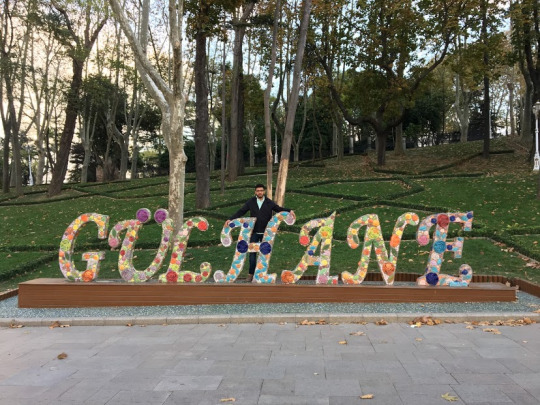
Day 3:
Istanbul Archeology Museum (Closed Mondays): For history buffs. Artefacts from Mesopotamia, Sumeria, Hittite, Phoenicia, Greeks and Romans.
Dolmabahçe Palace [Location: Karaköy]: Reach by tram from Sultanahmet, get down at Kabatas. Tickets to Palace + Harem is 90 TL. Audio guide is free and is also available in Hindi. Attractions are the European style grandeur, and the resting place of Mustafa Kemal Ataturk. There is an upper limit on number of people allowed, so go as early as possible especially in peak season. Also, no photography inside.
Museum of Innocence: Get down at Tophane Tram station, walk up a hill few hundred meters till you find a small house with vertical banner proclaiming itself as The Museum of Innocence. 40 TL if you don’t have the book, open till 6 (Closed Mondays). Guides available at 5TL with voiceover of the man himself.
Karaköy Güllüoğlu: Get down at Karaköy station and walk. Get a big baklava for 25TL.
Galata Tower: Walkable from Karaköy station. Keep walking towards that tower with the conical top. Roam around in the Karaköy neighbourhood. Expect a line at the Galata. The view is worth it. Also get the 4D ride at 13TL. It’s down at the 2nd floor though.
Day 4:
The Bosphorus Cruise: Starts at 10 AM from Eminönü docks, goes all the way to Anadolu Kavagi and back. Visit for the beautiful Cruise views, seafood and Yoros castle.
Day 5:
Suleymaniye Mosque: Walkable from Sultanahmet, or catch a tram to Bayezit. Sublime. Free reading materials on Islam for those interested.
Shopping at Mahmutpasa and Grand Bazaar: Shawl, lokums, carpets, tiles, lamps etc.
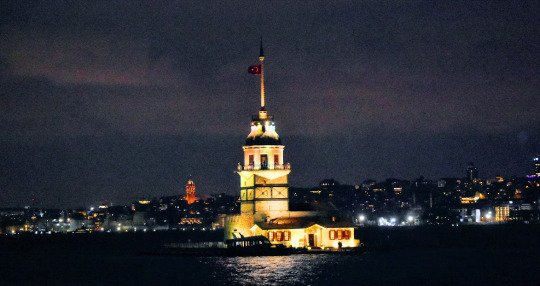
Maiden Tower or Kız Kulesi, taken from the Asian side. Galata Tower in the European side seen in background
Üsküdar and Kız Kulesi: Ferry from Eminönü . Visit for beautiful sunset if there are no clouds. Sip a çay as you enjoy the Bosphorus views. Kız Kulesi or Maiden Tower is not worth it.
Day 6:
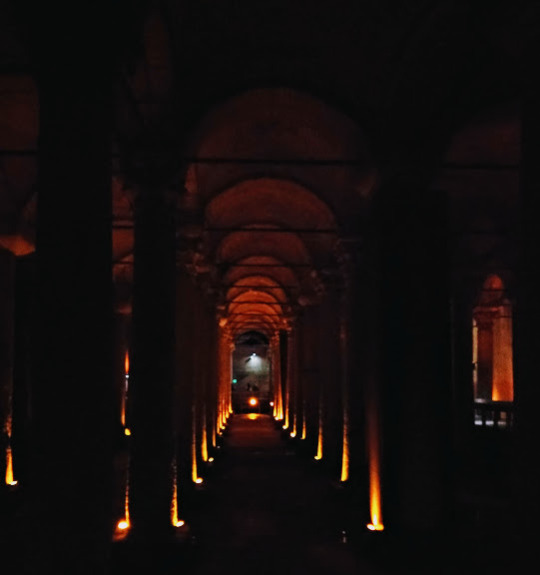
Basilica Cistern: In the Sultanahmet area, walkeable. Beautifully lit underground water reservoir dating to the Roman Empire. Visit for Roman architecture and columns with Medusa heads on it.
youtube
Commemorating Ataturk.
youtube
The Dondurma trick
0 notes
Text
A Date [Citation Needed].
@uncorruptedchampion
Sometimes, she had to wonder about her master’s ideas. Sometimes.
Don’t get her wrong, a day out was never unwelcome, but she wished it didn’t resort to intruding Nero’s place at an unreasonable hour. Well, an unreasonable hour for a human that is. Humans tend to sleep at night after all.
The kitsune sighed as she walked through a rarely ventured path among the lush greenery. If her memory served right, the human should be near this location. She did get ‘kidnapped’ that one time, and she was certain that it happened here. Talk about a peculiar place to have a short break from her shikigami duties, but she never minded it. Plus, she got acquaintted with someone Chen liked very much so the whole thing didn’t turn out to be a waste of time, it was an overall pleasant experience despite the difficulties she encountered.
Ah, speaking of the devil...there she was. Ran couldn’t help but feel a little nervous. Not because of Nero, but because of her own master. Yukari probably had high expectations regarding the outcome of this date...thing? It was a date, right? Or at least, that’s what her master would call it. Whatever’s the case, she had to spend time with the human, as awkward as that sounded.

“Greetings.” Ran approached Nero and bowed lightly as she greeted. “Hope you’re having a peaceful morning, Keller. My apologies if my unprompted visit has surprised you. My master can be a little unpredictable from time to time.”
#uncorruptedchampion#「The Gap Youkai's Summon (NPC: Ran Yakumo)」#「Sleepless Night of The Eastern Country (Queue)」
5 notes
·
View notes
Text
Another Puzzle!
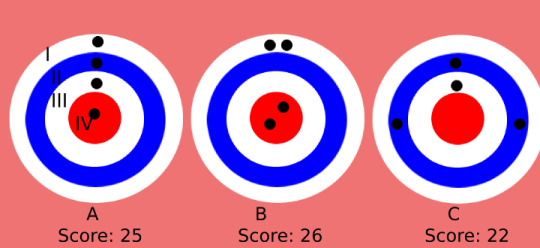
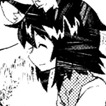
“Look at the picture above, alright? Three people decided to have some fun with darts and those are the scores each one of them got. As you can see, you know the score but don’t know how many points it costed in the sections I to IV. The objective here is to determine the dartboard’s score distribution. Here’s the guidelines:”
The value of each section is a single digit number.
No section shares the same value with another.
The value increases the closer you hit the center.
“Good luck and have fun with it! If you’re good at math then you’ll like this one a lot more!”
#「Red Oni(IC)」#photoshop crashes so here's A PAINT VERSION#「Sleepless Night of The Eastern Country (Queue)」#figured to share another target puzzle LOL#this one has a more mathematical approach#in case the image is too crappy#the black dots are where the darts hit
11 notes
·
View notes
Text
First, it all started with her subordinates being restless ever since the night sunk. No matter what she did to calm them down, they’d always act so weird once she looked away for a moment. It was probably a good idea she decided to stay at Mayohiga tonight, she couldn’t imagine the sort of trouble her subordinates would’ve made if they were left unchecked for long.
But then, the earth started shaking, and that’s how things started to get concerning for the young village chief. Earthquakes aren’t exactly uncommon, but living in a place full of aged houses, she couldn’t help but worry about the safety of her subordinates. As much as she didn’t want to leave them alone, she decided to go out and investigate the source of the tremor, whatever answers she could get in the way will be more than enough for her.
She commanded her cats to stay outside until she came back, thing that everyone listened through. She also prepared a campfire for them to stay warm through the night and even made sure that the flame will stay resilient until she was back with some information.
With all taken care of, it was time to leave.

“Alright, let’s hope for the best it’s nothing. Please stay safe.”
#「Red Oni(IC)」#「Sleepless Night of The Eastern Country (Queue)」#SDaFF#ALRIGHT I'M IN#WHOEVER IS DOING THIS PLEASE SCREAM AT ME#I'm semi late though
1 note
·
View note
Text
@puppeteerofthehail || From: “Haha, kitty staring goes じ~~~~~”
Ears perked up as her presence was soon acknowledged by the magician, who was amusingly busy in her own thing. Still, she proceeded to approach slowly just to make sure she doesn’t trip on anything or touch what she isn’t supposed to touch.
Projects like these can be delicate too, you know!
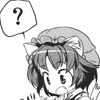
“You looked busy so I didn’t want to interrupt you or anything.” The shikigami explained, as she knew very well not to disturb others when working. “You building that to protect your house or?”
#puppeteerofthehail#「Red Oni(IC)」#DELICIOUS TEA AND MARY BISCUITS#Alice and her dolls are a whole new branch of engineering#「Sleepless Night of The Eastern Country (Queue)」
1 note
·
View note
Text

5 notes
·
View notes
Text
fairiesofgensokyo:

“All for the price of one small hex on you or someone you know.”
…
“Hey man, a Witch has gotta get practice somehow.”
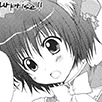
“A...hex?” Well, hexes are never good. She’d know better since she well, she practices them all the time. “I’d rather have it on me than anyone I know. I sure hope the healing is worth the stuff afterwards.”
14 notes
·
View notes
Text
@knightshonour from here
Stumbling on such mess was not a thing that shouldn’t surprise her. Being a demon and all, she’s crawled away from spots like this one. If anything, what surprised her was to see at least one being lying there in one piece--Well, barely but you get the idea. If it weren’t for her sharper senses, she would’ve thought that the armoured man was a corpse already. Although she had to wonder if the human before her can still be saved, his vitals seemed very erratic and faint not to mention he’s barely said a word.
She carefully stepped closer and then crouched down to take a better look at him and the situation the surrounded him--just in case his guts spilled over or something.

“I could pick the scent of your blood for a mile or so, I’m surprised no one try to eat you while here.” Coming from a beast like her, it shouldn’t be surprising. “Oh right, I looted this from an unlucky guy on my way here.” That bag sure’s seen better days but at least a few bandages and healing ointments were taken out.
“That wound looks big,” The sizzling on her hand was heard as a fiery spell manifested on her fingertips. “We should cauterize it shut just in case.”
Oh dear.
#knightshonour#you know you have it bad when a cat is your surgeon#「Red Oni(IC)」#「Sleepless Night of The Eastern Country (Queue)」
0 notes
Text
twinfoxtails:
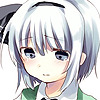
“…?”
Chen looked like she was in a lot of pain, it actually looked like her head was about to break into two, wasn’t she? Even so, he doesn’t know what’s going on, and it’s definitely not a normal headache.
Still, as someone who substituted for Ran to be Chen’s guardian, that was an easy question to answer.
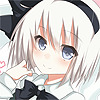
“You really don’t have to worry about that at all, Miss Chen. If Miss Ran or Miss Yukari thought so, she will tell you directly. Besides, you and Miss Ran have a link with each other which could understand each other’s feelings, don’t you? Have you ever felt disappointment or frustration towards you about this?”

“Disappointment...?”
Chen shut her eyes tightly, it almost seemed like having any kind of thought was painful.
Ẹ̶͗̐R̴̤̮͊̔R̷̜̯̊̀Ó̸̬R̴͎̟͛͠,̴͎̥̌ ̶̡̾Ĉ̶̗͒O̷̳͎̿Ù̷͖L̷̻̹̿͝D̷͕͔͑̋N̶̪̑͑'̶̻̮̐̄T̶͎̰̓̀ ̴̯̫͋R̸͍͇̈͗E̸̝͆T̵̙̳̏̅Ŗ̴̡̽I̸̫͉̅Ê̴͚̹V̵̗̒͑E̸̼͖͝ ̵̠̈̔D̶̠͂A̷̜̕̕Ț̶̜̇A̶͚̬͒͂.̸͈̿͋
“Even if...I didn’t feel it...Maybe--maybe she simply stopped me from detecting it.”
After all, Ran had complete control over her. Her programming could be tampered and she wouldn’t notice it. Or at least...that’s what she thought. Despite studying all sorts of subjects regarding shikigami and masters, her expertise was nothing compared to her masters and from that uncertainity lied her own doubts as a shikigami.
“What good is a shikigami without a purpose, though? All these years of training and studying...And there’s not much that’s changed. I can’t go with my masters when they got business to do, I can’t take over the most important tasks, I’m always behind them and I can’t keep up.”
W̸̧̡̬̭͓̖̗͖̱͚̫͛Ȁ̷̱̙̗̔̇R̴̢̯̭͓͓̥̬̊ͅͅN̶̛̯̪͚̹͍̳̏̍͗̋̅̄͛͐̑͜͠Ĭ̷̠̟͔̣͐͋Ņ̵̜͕͕̩̲̑́́͆͋̉͗̉̚G̵͔͖͇͐̀͊̎͋̓͂ͅ:̶̧̯͚̗̳̲̀̂́̀͌̂̊͊̕ ̷̞̦͙̥͔͎̻̫̬̜̣́ͅŞ̶̺̥̫̥͉͖͚͈̭̋̈̋́͆̈́́͘Ú̶̖̯̻̤͎̥̹͗͂̾̔͊͠D̸̡̞̞͍̻̲̲̘̍̓̈̀̕͝ͅD̵̡̧͖̯̝͎̿̇͆̿È̵̡̩̫̯͊̐͒͆͝N̷̪̺̜̻̙͉̻̱̰̹̼̏̊͐̅͝ ̵̥́̈́̄̓́̇͒̀̑͝D̸̨̢̢̤̩͛͋͜͝E̴̝̤͙̽̆̆̾͗͘ͅÇ̷̢̮̠͔̤̌̀́̉̉͂̃́͊L̵̙̆̄̊͘͠I̶̗̺̤̭͒͊́̒̓̈́̓̕ͅV̶̯͍͈̏̀E̸̦̗̓ ̷̡̛̘͚̮̘̱̥̺̣̦͍͗́̈́͌͆̀͒̈́̕̕ͅȮ̴̧̞̫̪̑͛̀͊̈̇͂͆̕F̶̢̘͉̺̞̣̯̗̣̓ ̷̧̛̿N̵̗̣̖̈́͝Ė̵̡̙̝̞̊̓̌Ǘ̴̘̺̲̯͖̹ͅŖ̴͉̬͒̈̈́̏̀̓͝Ơ̸̡̻̘͒́̎̆̕͘̕͝͝͠T̶̉͌͑��̬̩̤̩R̵̨͇̯̠͚͎̙̞͎̰̔͋̔Ḁ̶̛͎̣̹̅͛̍̾͠N̷̡̛̩̳̞͔͐̄̅̈́͆́̃͗̕͜S̴̛̹̗̊̑̇͆͒̃M̶̨̛͙̘̠͉̼͈̊̄̋̉̎̄͆̃̇̕͜Ì̶̧͚̼̲̼T̴̻̻̠̭͎͓̔̃̓̓̈͋̕Ţ̶̗̲̬̺̯͇͎͆̐̃̂͗͑̋̽͝Ē̸̖̪̣̫̥̲R̷̛͍̲̯̹̩̮̰̄͒̾͂̈́̈̾̉͌͝͝S̴̢̨̲̲̺͖̥̻̣̪̐̽̃̂͐͐̋͊̽͜͝͝ ̶̗̫͉͇̪̽͐́͋̎͆D̷̡͇͔̗̩̣̪̯̜̰͊ͅḘ̸̤̣̱͈̻̦̱́̐̏̿̈́̌͑̓̕͠T̵͖̬̯̎̅̂̂Ė̵̛̜̟̄̔̅̂̀̒̀͠C̴̛͇̜̘̭͉͆̾̓̈́͜Ṯ̸̊͑͐͒͝È̸̜͔̹̀̃̆͗̈́͛͆D̶̬̫͓̻͊̏̆͊.̷̢̡͖̻̦̰͚͖͎͇̈́ ̸̨̢̡͈͍̣͇͕̱̣̽̓͑̄̀
“I was very useful to them at first you know? I would survery my assigned spot everyday, no matter the weather or my own condition but then...but then something attacked me and my masters had no other option but to retire me for the rest of my days. Even though I became a youkai and all...it feels like I never recovered from it. I’m not working as hard as I used to, dammit.”
10 notes
·
View notes